After a hot week, when I have been trying to keep out of the heat so the garden has been a bit neglected, things may be getting back to some sort of normality. Lawns are looking a bit tired and some leafy plants have had a tough time. Any watering was done in the evening and the priority had to be pots and baskets and some of the veg. Now that it has rained and the forecast is for lower temperatures we can get back to normal times in the garden.
But while we have been hiding from the heat lots of things have been happening in the garden. Here are some of the problems that have been developing while my back was turned.
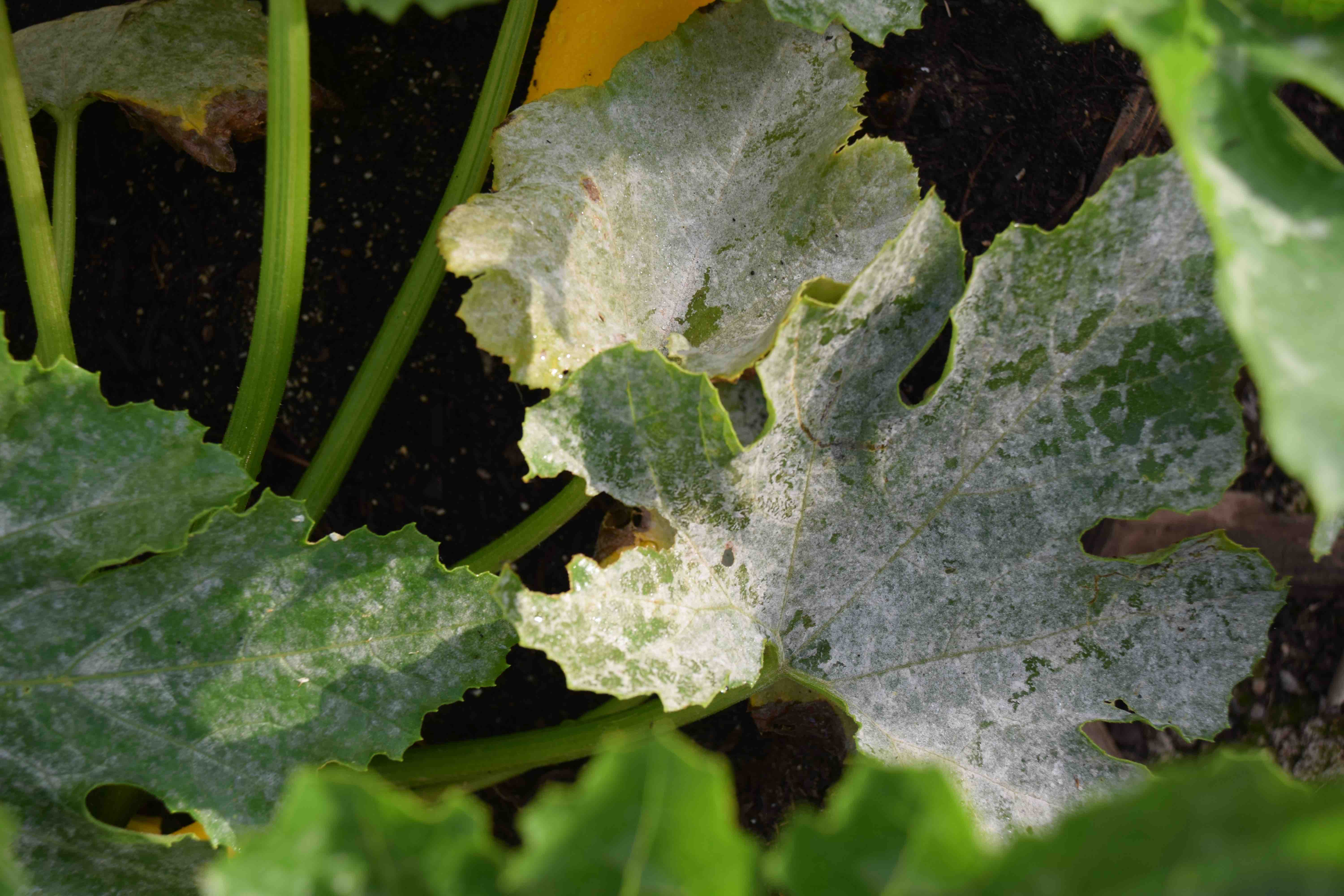
Powdery mildew is a fungal disease that affects a wide range of plants including phlox, clematis, apples and courgettes. It is usually the result of dryness at the roots and my courgettes that are affected are in a raised bed. The affected leaves are best removed. You cannot spray to get rid of mildew, though it may prevent further leaves getting infected – but so will more watering. Do not confuse mildew with natural silvery marks on courgette leaves.
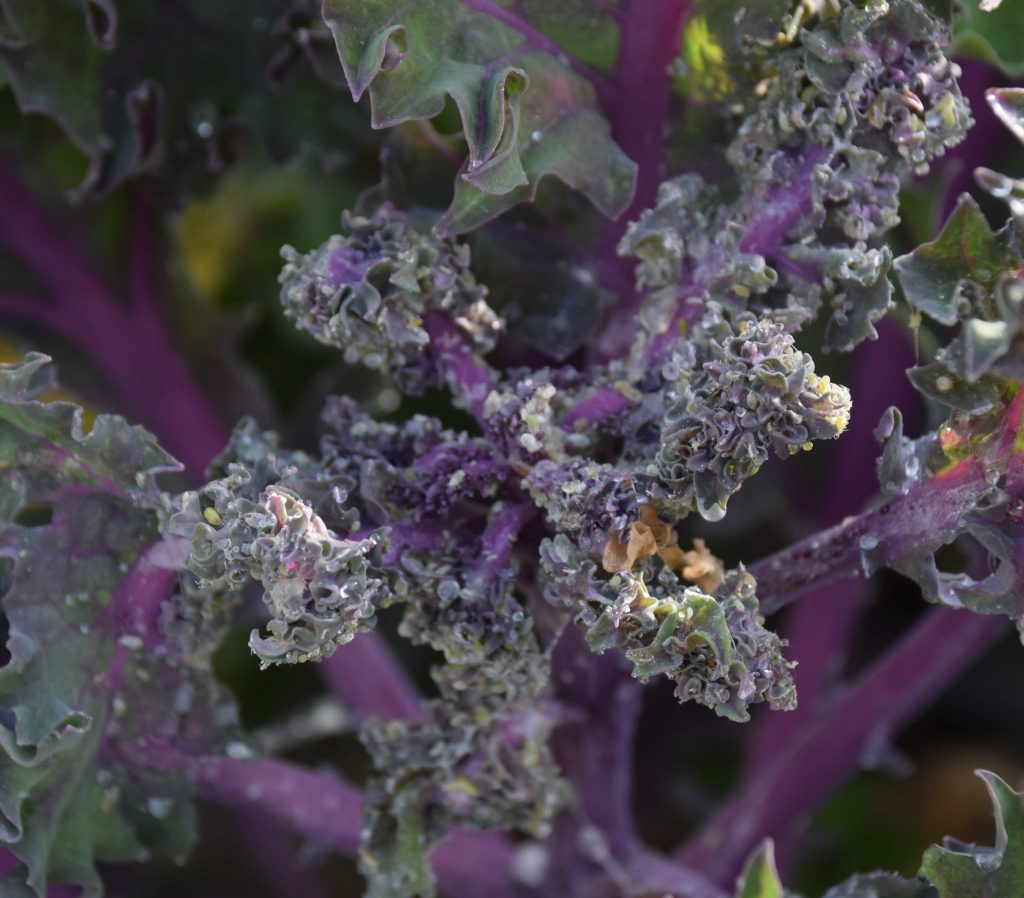
Another problem is the veg garden is mealy aphid, a grey ‘greenfly’ that infects the growing tips – here on my kale. It causes distortion of the leaves and is a real pest on kale, cabbage and brussels sprouts. Because they get into every crevice and will get into the sprouts when they develop, it must be got rid of as soon as possible and here I would use a spray of some kind.
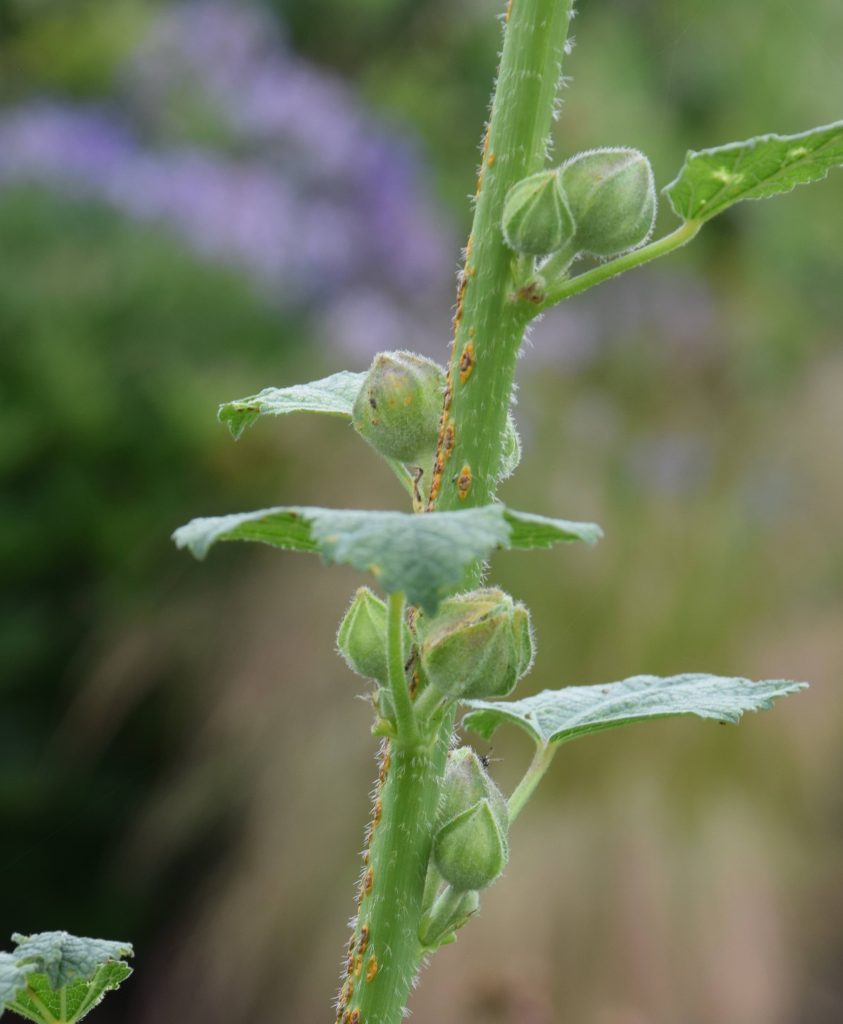
Another disease that I get every year is Hollyhock rust. This only affects hollyhocks and related plants such as wild mallow. It starts as a few orange spots on the leaves but can spread to the whole plant. The leaves eventually die and it spread right up the plant. The hollyhocks still flower but they look awful. If you love hollyhocks you need to spray every year with a fungicide before you see the damage – it is too late to spray once plants are as bad as mine! I have decided that I don’t like hollyhocks enough to put up with this. Rust on various plants can be rather local. Hollyhock rust starts on wild mallow plants so it is usually worse in rural areas and is rare in small urban plots.
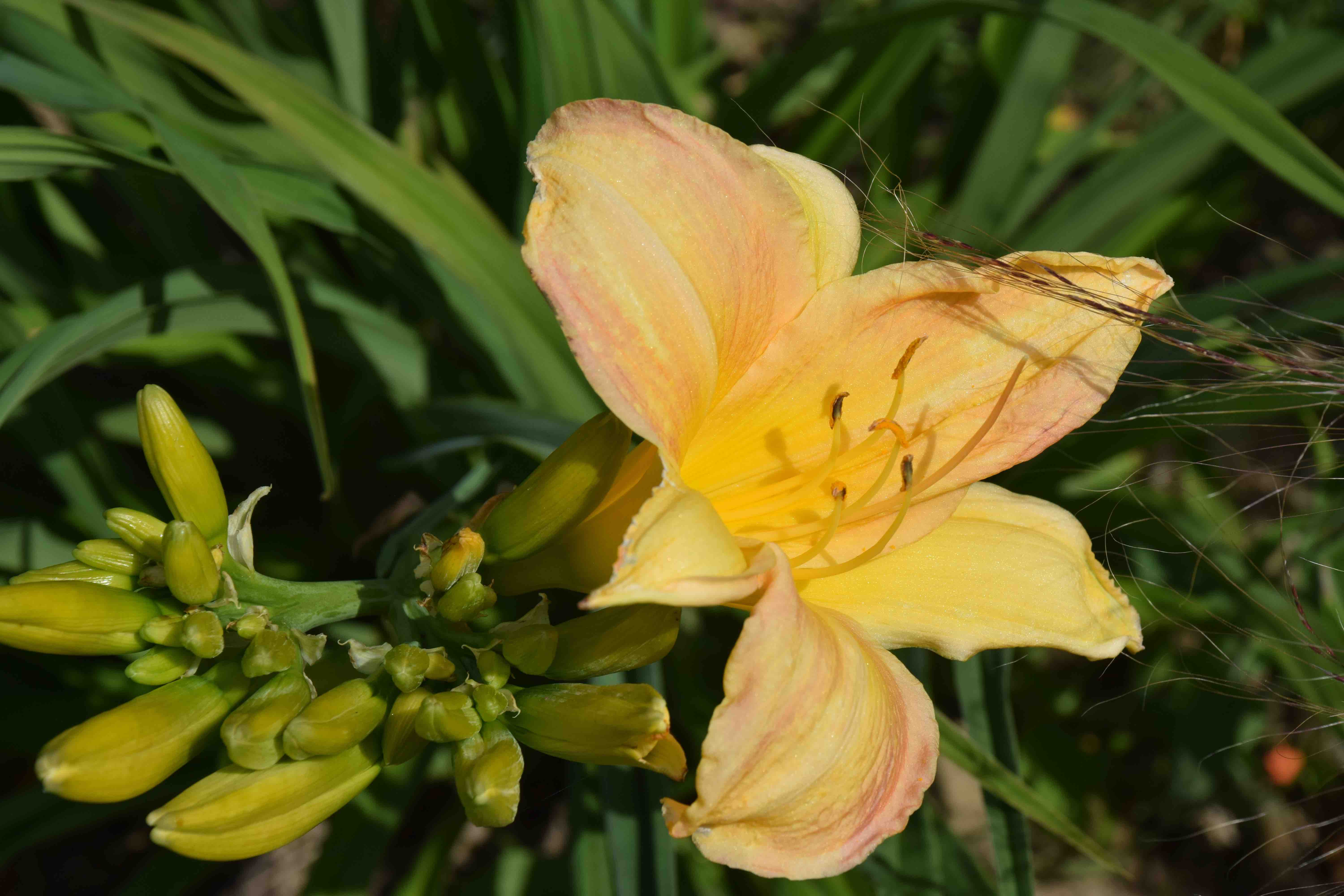
Another pest that may affect some ares and not others is daylily gall midge. I am fortunate that I don’t have it, so I can only show a healthy plant (and long may it remain so) but it is abundant in the Surrey area so needs to be mentioned. The small midge lays eggs on the flower buds and these hatch into grubs that live inside the buds. The flower buds become distorted and swollen and never open. So if your daylilies have fat buds that don’t open you have this pest. If you leave them the grubs will drop into the soil to overwinter and emerge again next spring. Check your plants and remove any affected buds and get rid of them. This year the warmth has suited the pest and I have heard of plants that have not opened any blooms because so many were affected.
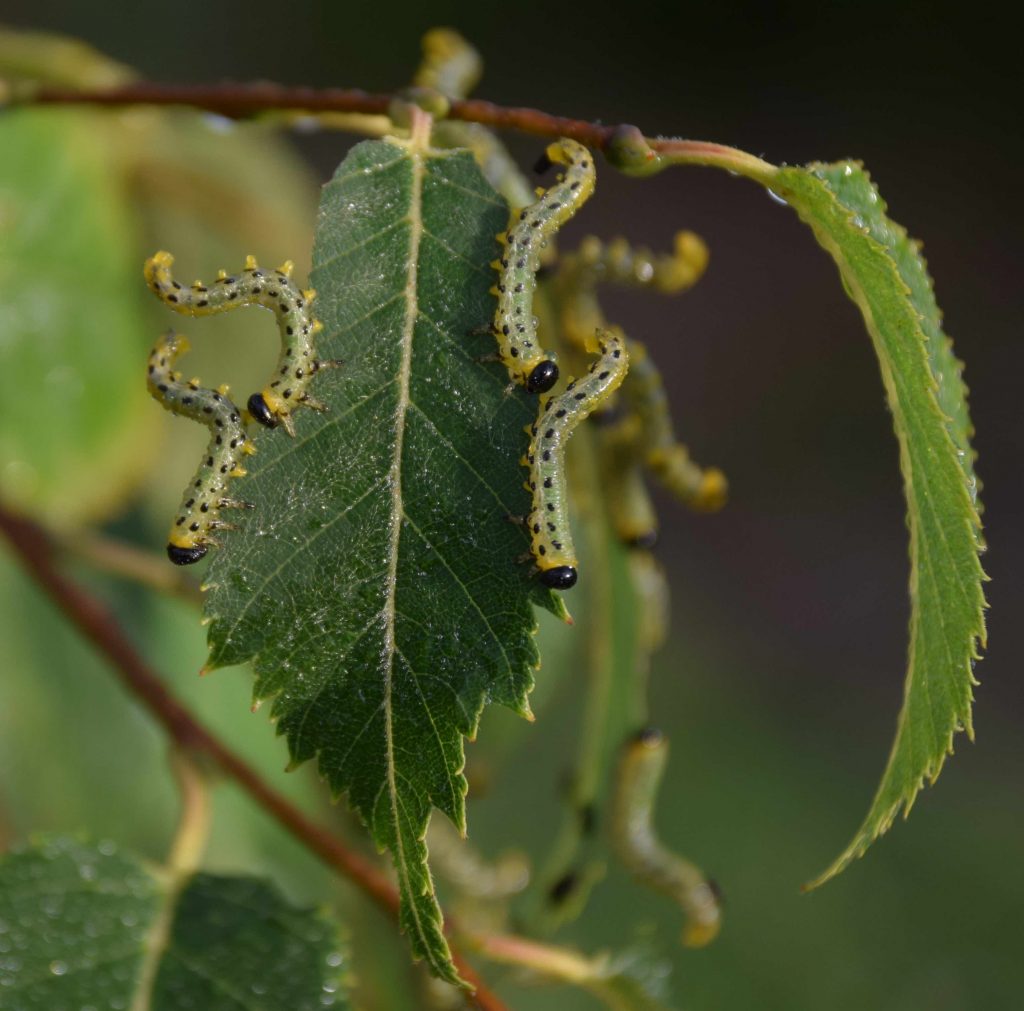
And lastly, sawflies. Different species affect different plants and there are kinds that strip the leaves of gooseberries, Solomon’s seal and birch. I have planted lots of birch in my new garden and the sawflies have moved in – on the most expensive and unusual of course! Characteristically they feed in groups and strip the foliage, leaving only veins. When disturbed or threatened they curl their bodies back so they look bigger – perhaps to frighten off birds though they also taste bad apparently. You can spray them but it is usually easy enough to cut off the leaves affected into a pot and dispose of them so they don’t develop and overwinter to return next year.
Jobs for the week
Deadhead lilies the the last petals drop to prevent seed pods forming
Deadhead roses, give them a soak and apply a dressing of rose fertiliser
Water sweetcorn in dry periods to help the cobs set and swell
If the soil is moist make late sowings of lettuce and other salads
Sow pansies and forget-me-nots for colour next spring